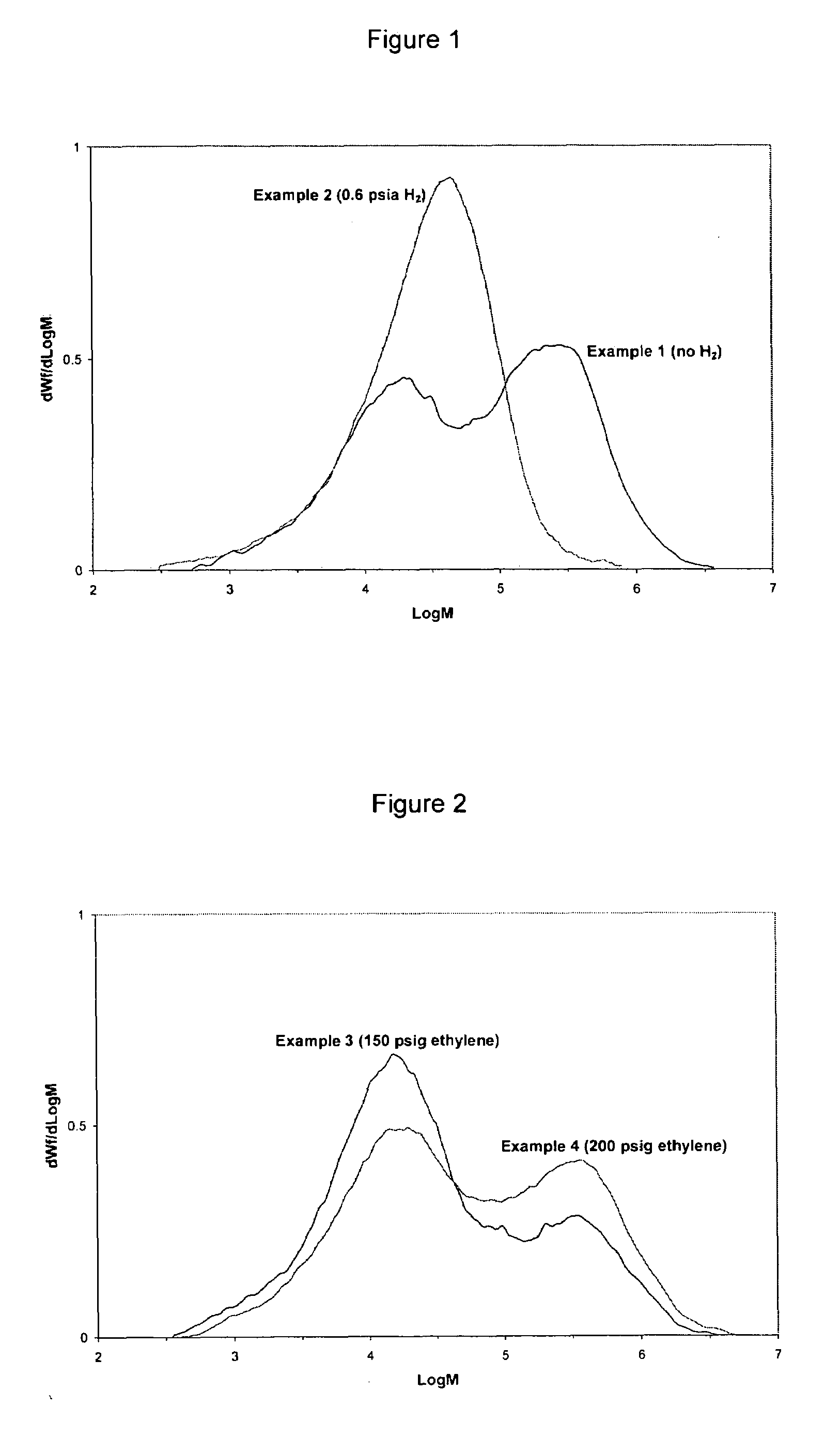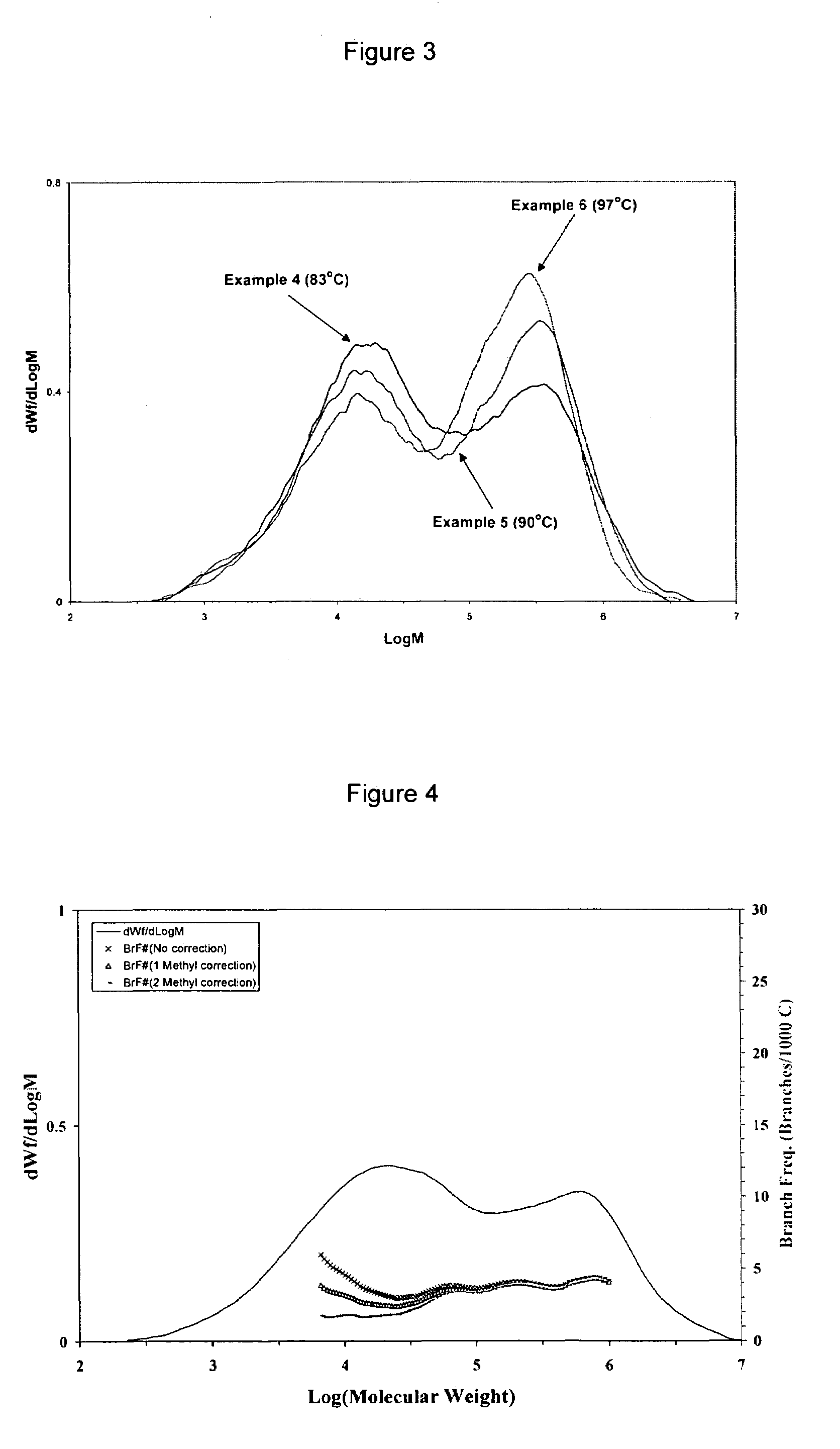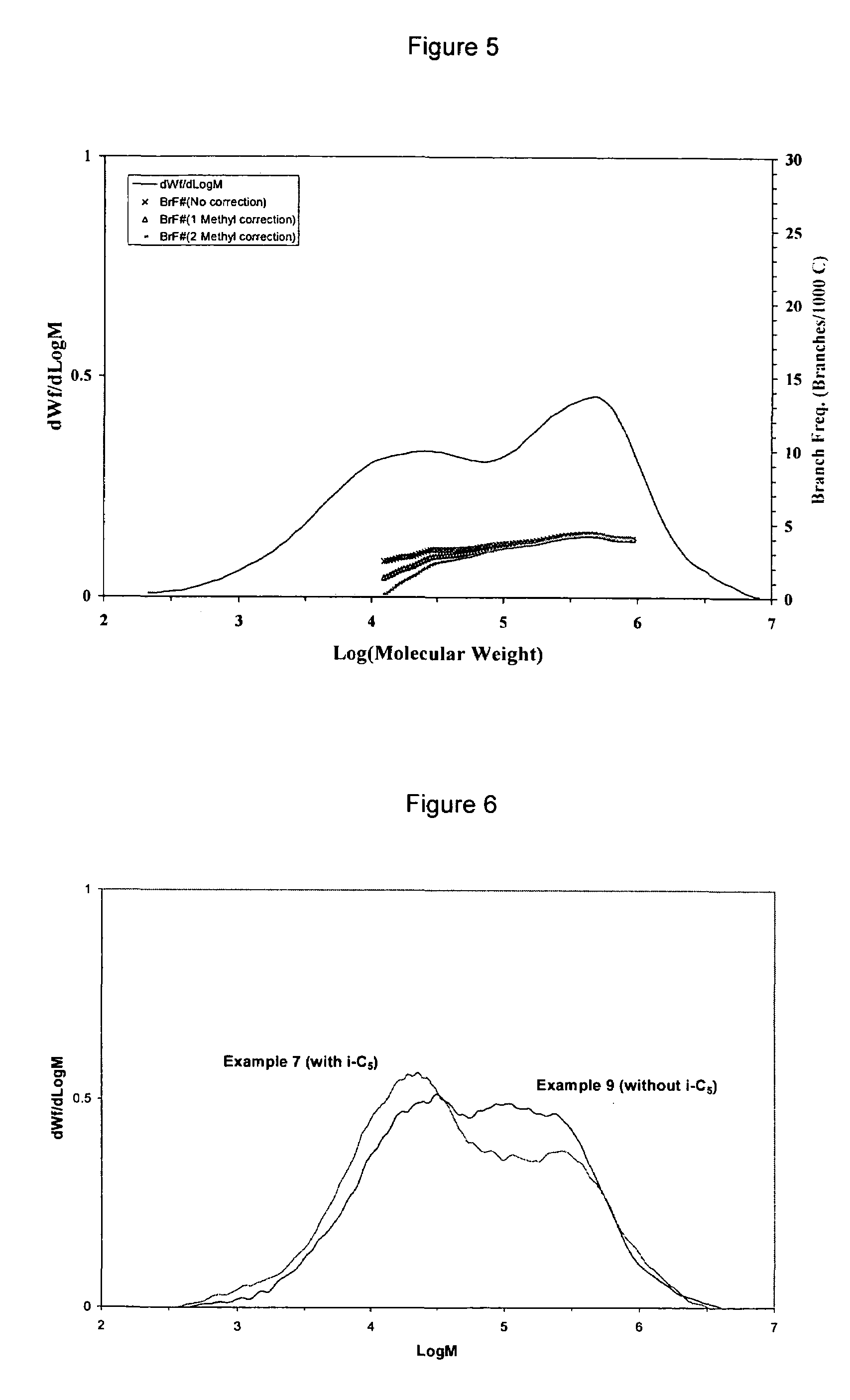Adjusting polymer characteristics through process control
a technology of polymer characteristics and process control, applied in the field of adjusting polymer characteristics through process control, can solve problems such as failure to teach or suggest, and achieve the effect of altering the amount of non-polymerizable hydrocarbons
- Summary
- Abstract
- Description
- Claims
- Application Information
AI Technical Summary
Benefits of technology
Problems solved by technology
Method used
Image
Examples
example 1
Preparation of Catalyst A
[0149]In a glovebox, 1.37 g of silica-supported MAO prepared above was slurried in 25 mL of toluene. Separately, 18 mg of catalyst component 1 was dissolved in 10 mL of toluene, and 16 mg of (tBu3PN)(C6F5)(n-Bu)CpTiCl2 was dissolved in 10 mL of toluene. Both catalyst solutions were added simultaneously to the silica slurry. After one hour of stirring, the slurry was filtered, yielding a clear filtrate. The solid component was washed twice with toluene, and once with heptane. The final product was dried in vacuo to 300 mTorr (40 Pa) and stored under nitrogen until used.
[0150]A 2 L stirred autoclave reactor was heated at 100° C. for 1 hour and thoroughly purged with nitrogen. 160 g of NaCl, pre-dried in an oven at 160° C. for at least a week, was added in the reactor which was subsequently pressure purged three times with nitrogen and twice with ethylene at 100° C. The reactor was then cooled to 90° C. and an aliquot of 25 weight % triisobutyl al...
example 2
[0151]The procedure was the same as Example 1, except that 27.5 mg of Catalyst A was used for polymerization and 0.6 psia (4.1 KPa gage) of hydrogen was pre-charged to the reactor prior to polymerization, yielding 65.5 g of polymer.
[0152]The GPC profiles of the polymers produced in Examples 1 and 2 are shown in FIG. 1. In the absence of hydrogen, a polymer with bimodal MW distribution was produced. However, in the presence of hydrogen, the peak corresponding to the high MW fraction shifted to a lower MW, resulting in a unimodal polymer. Hence, by adjusting the level of hydrogen in the reactor, one can control the polydispersity of polymers, changing them from a unimodal distribution to a broad or bimodal distribution.
example 3
Preparation of Catalyst B
[0153]In a glovebox, 137 g of silica-supported MAO prepared above was slurried in 400 mL of toluene. Separately, 2.26 g of catalyst component 1 was dissolved in 100 mL of toluene, and 1.24 g of (tBU3PN)(n-hexylC6F5Cp)TiCl2 was dissolved in 100 mL of toluene. Both catalyst solutions were added simultaneously to the silica slurry. After one hour of stirring, the slurry was filtered, yielding a clear filtrate. The solid component was washed twice with toluene, and once with heptane. The final product was dried in vacuo to 300 mtorr (40 Pa) and stored under nitrogen until use.
[0154]A 2 L stirred autoclave reactor was heated at 100° C. for 1 hr and thoroughly purged with nitrogen. 160 g of NaCl pre-dried in an oven at 160° C. for at least a week was added in the reactor which was subsequently pressure purged three times with nitrogen and twice with ethylene at 100° C. The reactor was then cooled to 83° C. and an aliquot of 25 weight % triisobutyl al...
PUM
| Property | Measurement | Unit |
|---|---|---|
| temperature | aaaaa | aaaaa |
| temperature | aaaaa | aaaaa |
| partial pressure | aaaaa | aaaaa |
Abstract
Description
Claims
Application Information
 Login to View More
Login to View More - R&D
- Intellectual Property
- Life Sciences
- Materials
- Tech Scout
- Unparalleled Data Quality
- Higher Quality Content
- 60% Fewer Hallucinations
Browse by: Latest US Patents, China's latest patents, Technical Efficacy Thesaurus, Application Domain, Technology Topic, Popular Technical Reports.
© 2025 PatSnap. All rights reserved.Legal|Privacy policy|Modern Slavery Act Transparency Statement|Sitemap|About US| Contact US: help@patsnap.com



